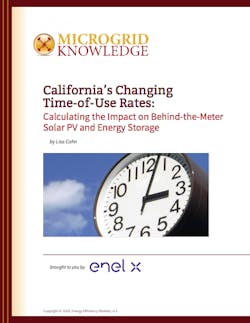For utilities, electricity is generally more expensive and complex to deliver when demand is high. To help cover these costs, California’s utilities have traditionally imposed time-of-use (TOU) rates, which created a daily schedule that applies different prices for power based on demand trends on the grid. When demand is highest, prices are highest under TOU rates.
In the past, daily grid demand ramped up in the morning, peaked from noon into the early afternoon as temperatures and air conditioning usage increased, and then gradually decreased as the day progressed. Though there is some additional nuance to the scheduling, California’s utilities have long scheduled on-peak hours — during which rates were the highest — from around 11 a.m. to about 6 p.m.
For utilities, TOU rates helped increase revenue to cover the high costs of delivering power when demand was high. For energy consumers, this created an incentive to minimize reliance on the grid for power during on-peak hours. This has long been a significant part of the value of on-site solar photovoltaics (PV) for the state’s large energy consumers.
However, the rise of solar power generation in the state — both behind-the-meter and at the utility scale — has disrupted the dynamics of the supply mix supporting California’s electric grid. Utilities are adapting to these new realities with changes to their TOU rate schedules, which will have a significant impact on the business case for behind-the-meter solar PV and energy storage systems.
A new whitepaper brought to readers by Enel X explores these trends and the potential impact of California’s time-of-use rates on behind-the-meter PV solar PV and energy storage.
